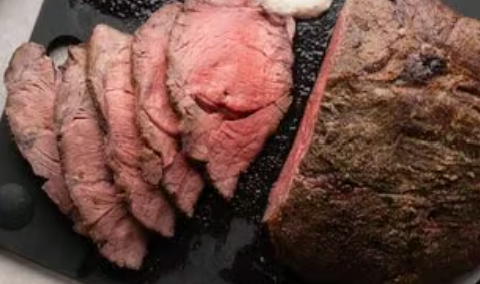By Douglas V. Gibbs
While many consumer prices are working their way downward under President Donald Trump’s watch and inflation is much more manageable than it was under Joe Biden or Barack Obama, the prices of beef have been surging upward. Typically, when prices fluctuate in this kind of manner, supply and demand is somewhere on the list of factors involved. Supply is a huge part of the modern problem with beef prices, with the U.S. cattle herd down to its smallest size in 70 years.
Government policies and cultural tendencies historically influence the rise and fall of beef prices. Beef is not the only meat victim, however. Between 2020 and August 2025, the price of all animal proteins rose by about 30%. Beef, however, has jumped during that same time period by about 97%.
The drop in the size of America’s cattle herd is largely due to a mixture of economic, environmental, and structural pressures. The rising cost for feed, fuel and labor have contributed, as have increased regulations. Increased governmental regulations have resulted in providing a benefit for large meatpackers due to the reduced competition from smaller independent ranchers who are economically unable to comply in the same manner. Water scarcity and poor pasture conditions have influenced the herds across major cattle-producing states. Structural shifts have largely been influenced by the leftist cultural trend that has been pushing Americans away from red meat, increasing demand for chicken and plant-based proteins. Meanwhile, the increased dependency upon foreign beef through anti-American tariff polices of the past have increased imports. As technology is moving towards enabling the ability of producers to meet demand with fewer animals, fewer young female cattle are being kept for breeding, which in turn makes it difficult to kick-start an increase in reproduction if needed.
Domestic ranchers are putting fewer animals in the field as a result of these factors and more, but historically these trends cycle about every ten to twelve years, so experts explain that while prices are high many domestic ranchers will try to increase the number of animals in the field to attempt to capitalize on the higher prices. Then, as the cycle proceeds, the expanded number of animals being processed will drive down the price of cattle and beef and then in response the ranchers will dial back the number of animals in the field.
Getting back to reproduction, it takes a young female about two to three years to begin reproducing, and given the fact that less females are being held by ranchers for breeding, the cycle may take a while before it begins bringing prices back down. With the change in tariffs by President Trump who is increasing the cost to import, the trend will eventually move away from importing beef and we will see an increase in American beef in the market. But, it takes time for that shift to take place. Therefore, we will likely see higher prices for a while, until the process does what it can to normalize the market and shift back to favorable conditions for American beef producers.
Recognizing the need to do what can be done to boost American beef production the U.S. Department of Agriculture under Secretary Brooke Rollins has announced a plan to open more lands for grazing and reduce the regulatory stranglehold by the federal government. In the meantime, as we wait for the American market to respond, President Trump has indicated that importation of beef from Argentina is on the table. Independent ranchers fear that the market manipulation by government could be disastrous for independent ranchers. Voicing the concerns of independent operators, Stamford, Texas Mayor James Decker on X indicated, “Unless the deal is to break up the cartel of beef packers, the outcome is going to screw American ranchers who are actually making money for the first time in a while.” The four major meatpacking companies process 85% of the American beef supply. While a generation ago ranchers earned 60% of the consumer beef dollar, today that percentage has dropped to 40%.
President Trump understands the supply and demand component of the issue, which is why he is considering increasing the supply through targeted importation, but the plan reeks of protective mercantilism, which, if not carefully managed, could backfire. Trying to lower prices by inviting even more imports places American producers at a disadvantage and may result in an increased dismantling of America’s beef industry. That said, this is not the first time we’ve experienced lean years, and while U.S. production has dropped a number of times in history, the market has historically bounced back in the end, even when imports were in the mix.
One thing I feel obliged to point out, however, is as a constitutionalist the insertion of government control can be dangerous. I am a proponent of laissez-faire, the concept believed by the Founding Fathers that our free market works best when it is allowed to follow its natural course, which means that it must experience as little governmental influence as possible. Anytime Washington D.C. sticks its nose into our free market system it becomes a perilous slippery slope that usually results in bad market responses. It’s one thing to ride the rollercoaster of droughts, blizzards, disease and consumer trends, which can be typically managed, but government influence derails the ability to make those adjustments, particularly when the government’s regulatory actions have no regard for the domestic producers, consumers, and the already volatile trends in play.
While government focuses on the price of beef, one must consider the cost of doing business. The cost of land, feed, equipment and operating that equipment all goes into the prices; and producers have been paying more on the cost of doing business with each passing cycle. The competition of imports due to the prior imbalance on tariffs have also been influential, with imports constituting 10% of U.S. beef consumption in the 1980s – today imports make up over 22%. When the market is flooded with cheap imported beef, it places domestic production at a disadvantage.
If the plan to import beef from Argentina goes into action, and it backfires, as Oregon rancher James Burke has pointed out, it “could turn ranchers against a president who has historically enjoyed enormous popularity in cowboy country.”
— Political Pistachio Conservative News and Commentary



